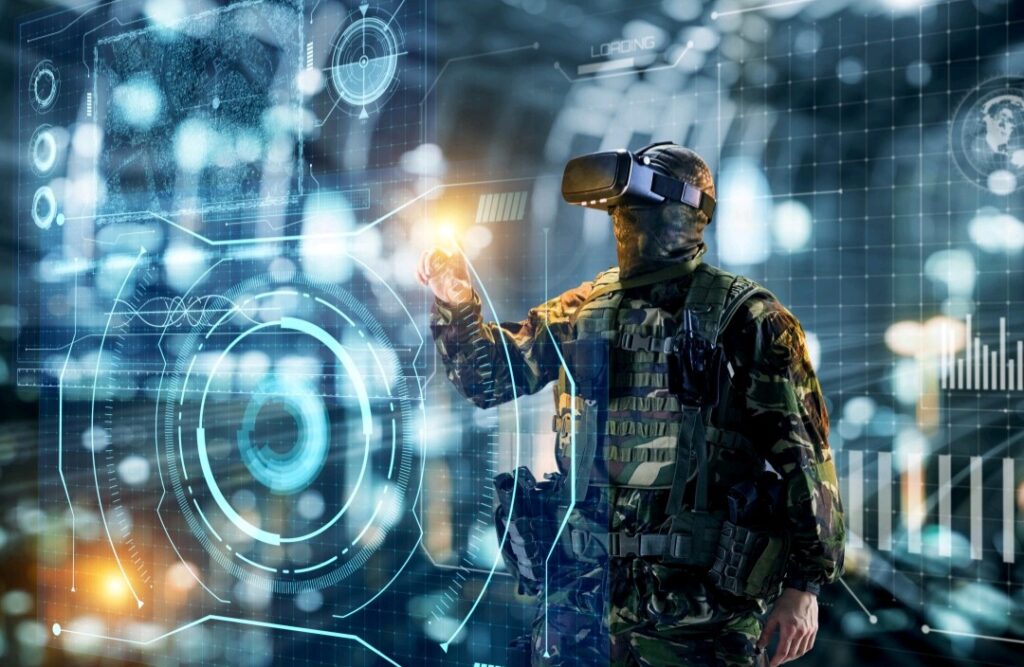By: Major General Sudhakar Jee, VSM (Retd)

The Hamas attack on October 07, 2023 and the Pager and Icom attacks by Mossad against the Hezbollah’s rank and file on September 17 and 18, 2024, have demonstrated an unprecedented dimension of conflict, as the concept of 6G Warfare emerges as the next frontier. Navigating the emerging military technological advancements, and their applications continue to retain primacy and present new challenges in the landscape of warfare in the 21st Century. While 5G technology has already begun to revolutionize military operations, 6G promises to take these capabilities to an unprecedented level.
Increasing bomb hoaxes and train derailments in India in 2024, as part of the ongoing hybrid/irregular/grey-zone warfare by forces inimical to India’s progress and growth, highlight the evolving nature of cybercrimes predominantly targeting the economy of the country. The civil aviation, infrastructure, communication network, schools, hospitals and malls among others being the major victims of such threats, are likely to retard the predictable growth chart if not prevented from future onslaughts. As the rise in such cases is mainly due to use of end-to-end encryption of social media usage by the attackers, it makes detection that much more impossible. Therefore, besides being a security hazard, such threats also cause significant economic losses.
Hence, for India, a nation with significant regional and global security concerns, preparing for 6G Warfare is crucial.
What is 6G Warfare
6G Warfare is a new warfare predominated by cognitive domain related to “hacking of human mind” by various means of “Disinformation, Misinformation and Malinformation”. The latest concept making rounds in western media is based on “Weaponization of Neurosciences” with an aim to prepare for warfare around 2040.
6G Warfare encompasses a range of advanced technologies that extend beyond the capabilities of 5G. These include ultra-high-speed communication networks, enhanced connectivity, artificial intelligence (AI), quantum computing, advanced robotics, and sophisticated cyber capabilities.
Characteristics of 6G Warfare
The primary characteristics of 6G warfare are enumerated below:-
- Unprecedented Speed and Connectivity – 6G networks are expected to offer data transfer speeds up to 100 times faster than 5G, enabling real-time communication and decision-making across vast distances.
- AI and Machine Learning Integration – The integration of AI and machine learning will enhance autonomous systems, allowing for rapid data analysis, decision-making, and operational execution without human intervention.
- Quantum Computing – Quantum computing will revolutionize encryption and decryption processes, making communication networks more secure and enhancing the capabilities of cyber warfare.
- Advanced Robotics and Autonomous Systems– 6G technology will enable the deployment of advanced robotic systems and autonomous vehicles, increasing operational efficiency and reducing human casualties in combat.
- Enhanced Cyber Capabilities – The evolution of cyber warfare will see more sophisticated offensive and defensive capabilities, with an increased emphasis on protecting critical infrastructure and communication networks.
Implications
The strategic advantages the 6G would accrue to India are as follows: –
- Enhanced connectivity and real-time data sharing will improve situational awareness, command and control, and coordination among different branches of the military.
- Modernization of Armed Forces – Integrating 6G technologies into India’s armed forces will drive modernization efforts. This includes upgrading existing platforms, developing new weapon systems, and improving logistical support and maintenance.
- Enhanced Cybersecurity- With cyber threats becoming increasingly sophisticated, 6G technology will offer better tools for defending against cyber-attacks. Quantum computing, in particular, will strengthen encryption methods, ensuring secure communication channels.
- Boost to Indigenous Defense Industry – Investing in 6G technology will stimulate India’s indigenous defense industry. Collaborations between defense research organizations, academia and private companies will spur innovation and technological advancements.
Suggested Strategy for 6G Warfare
India’s strategy for 6G Warfare can be based on a short, medium and long term perspective for implementation at local, regional and strategic levels:-
- Challenges and Considerations Infrastructure Development- Developing the necessary infrastructure for 6G technology is a significant challenge. This includes building new communication networks, data centres, and research facilities, all of which require substantial investment.
- Skilled Workforce – A highly skilled workforce is essential for harnessing the potential of 6G technologies. India must invest in education and training programs to develop expertise in AI, quantum computing, cybersecurity and other relevant fields.
- Regulatory and Policy Frameworks- Establishing robust regulatory and policy frameworks is crucial to govern the use of 6G technologies. This includes addressing issues related to data privacy, cybersecurity, and ethical considerations in the deployment of autonomous systems.
- Global Cooperation and Competition- Navigating the global landscape of 6G technology involves both cooperation and competition. India must engage in international collaborations while also safeguarding its strategic interests and maintaining technological sovereignty.
- Strategic Measures for India Investment in Research and Development – Prioritizing investment in research and development is essential. Government funding, along with private sector participation will drive innovation and accelerate the development of 6G technologies.
- Public-Private Partnerships- Encouraging public-private partnerships will facilitate the transfer of technology and expertise between the government and private enterprises. This collaboration is vital for building a robust 6G ecosystem.
- International Collaborations – Engaging in international collaborations with technologically advanced nations will provide access to cutting-edge research and best practices. Strategic alliances and partnerships will also enhance India’s global standing in the 6G arena.
- Focus on Cybersecurity – Developing a comprehensive cybersecurity strategy is imperative. This includes strengthening cyber defenses, improving incident response capabilities and fostering a culture of cybersecurity awareness.
- Military Training and Adaptation – Updating military training programs to incorporate 6G technologies is crucial. This includes training personnel in the use of advanced systems, AI-driven decision-making and cyber warfare techniques.
Conclusion
The advent of 6G Warfare represents a paradigm shift in military technology, offering unprecedented capabilities and strategic advantages. For India, preparing for this new era requires a concerted effort to develop the necessary infrastructure, invest in research and development, and foster international collaborations. By embracing 6G technologies and addressing the associated challenges, India can enhance its military capabilities, ensure national security and assert its position as a key player in the global technological landscape.

Major General Sudhakar Jee, VSM (Retd) has been General Officer Commanding, 3 Infantry Division and Colonel of the Mahar Regiment of the Indian Army. The General Officer is now an internationally renowned defence and strategic affairs analyst who often appears on leading television news channels for discussions and whose articles and comments are regularly published in reputed print media publications.


Informative and a timely intervention.
Blue Techker Good post! We will be linking to this particularly great post on our site. Keep up the great writing
Thinker Pedia very informative articles or reviews at this time.
Back Magazin This is really interesting, You’re a very skilled blogger. I’ve joined your feed and look forward to seeking more of your magnificent post. Also, I’ve shared your site in my social networks!
Blue Techker I just like the helpful information you provide in your articles
Blue Techker I really like reading through a post that can make men and women think. Also, thank you for allowing me to comment!
I have recommended this blog to all of my friends and family It’s rare to find such quality content these days!